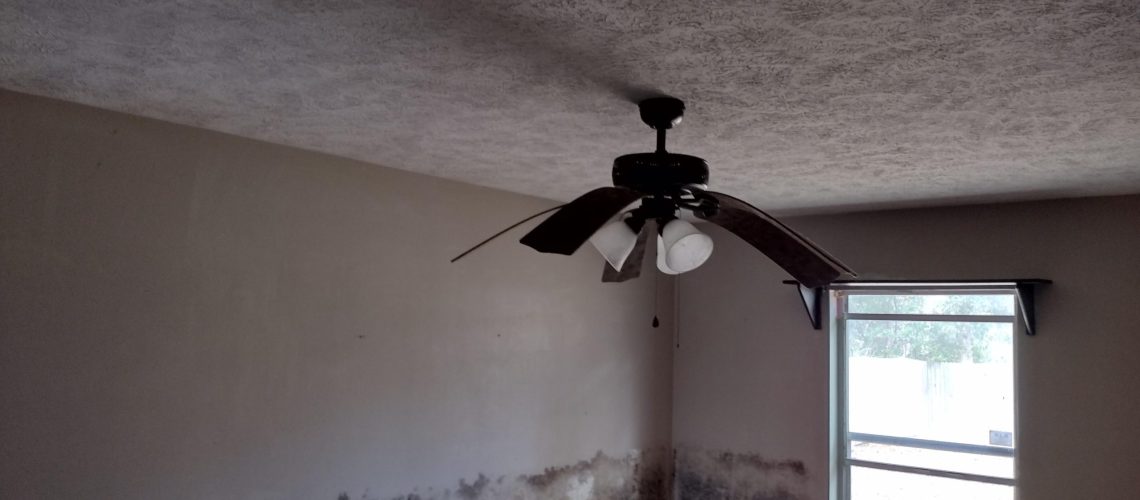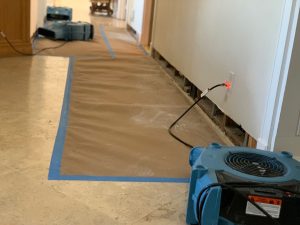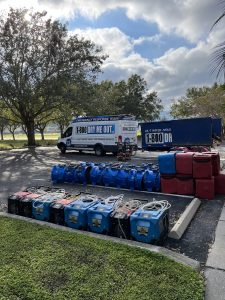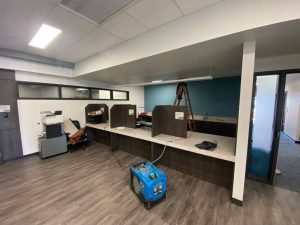Mold is sneaky. It doesn’t need much to thrive—just a little moisture, a bit of warmth, and a place to hide. And once it finds a cozy spot inside your home, it can grow fast, often without you even knowing it’s there. At Dry Me Out, we’ve seen mold in just about every corner of a home, and we know how frustrating (and unhealthy) it can be to deal with. That’s why we’re sharing some of the most common places mold tends to grow indoors, and how you can stay ahead of it.
Key Takeaways
- Mold thrives in warm, moist, and dark environments. Common culprits include bathrooms, basements, kitchens, attics, and laundry rooms.
- Look in hidden or overlooked places. Behind appliances, inside walls, under carpets, and around windows are mold’s favorite hiding spots.
- Act fast if you spot signs of mold. Musty smells, stains, or recent water damage can all point to potential mold problems.
- Prevention starts with moisture control. Use exhaust fans, dehumidifiers, and good ventilation to keep your home dry.
- Professional help matters. Dry Me Out is here to inspect, remove, and help you prevent mold, no matter where it’s hiding.
Why Mold Grows Indoors
Before we dive into the specific hiding spots, let’s talk about what mold actually needs to grow:
- Moisture – From high humidity to plumbing leaks, mold needs moisture to survive.
- Organic material – Things like wood, paper, fabric, and drywall are all mold’s favorite food sources.
- Lack of airflow – Stale, humid air allows moisture to linger and mold to thrive.
- Darkness – Mold doesn’t love sunlight. Dark corners and hidden spaces are perfect breeding grounds.
Knowing the ideal conditions helps you understand why mold shows up where it does and how to successfully prevent it.
1. Bathrooms: The Perfect Storm
If mold had a favorite room in your house, it’d probably be the bathroom. Between the steamy showers, leaky sinks, and poor ventilation, bathrooms are a mold magnet.
Where to check:
- Behind and under the toilet
- Under the sink and inside vanities
- Around the bathtub or shower, especially where the caulk or grout is cracked
- On shower curtains and bath mats
- In tile grout
Tip: Run an exhaust fan while showering, and leave the bathroom door open afterward to help dry things out.
2. Basements: Out of Sight, Not Out of Mind
Basements are another mold hotspot. They’re often dark, humid, and less ventilated than other parts of the house. Plus, they’re prone to water seepage or flooding.
Where to check:
- On concrete walls and floors
- Behind stored boxes or furniture
- Around windows or vents
- Near water heaters or HVAC systems
- Inside crawlspaces or sump pump areas
Tip: A dehumidifier can be your basement’s best friend. Keep humidity levels below 50% to help prevent mold growth.
3. Kitchens: Cooking Up Moisture
Kitchens deal with a lot of moisture, from cooking steam to sink splashes and even appliance leaks. If not cleaned and ventilated properly, mold can find plenty of places to settle in.
Where to check:
- Under the sink and around the garbage disposal
- Behind or under the refrigerator (watch out for water line leaks)
- Behind dishwashers or other large appliances
- Inside cabinets, especially near plumbing
- Around windows, especially if there’s condensation buildup
Tip: Clean up spills quickly, and inspect appliance hoses regularly for leaks or drips.
4. Attics: Out of Sight, Easy to Miss
Attics are often neglected when it comes to regular home maintenance, but mold loves the insulation, wood framing, and lack of airflow commonly found in these spaces.
Where to check:
- On roof decking or rafters (especially after a roof leak)
- Around vents or chimneys
- Near attic windows or skylights
- In insulation (particularly if it’s old or damp)
- Around HVAC components or ductwork
Tip: Proper attic ventilation is essential. Ridge vents, soffit vents, and even attic fans can help circulate air and reduce moisture buildup.
5. Laundry Rooms: More Than Just Dirty Clothes
Laundry areas deal with water, heat, and humidity, AKA all of the things that mold loves. And because we’re often focused on getting clothes washed and dried, we don’t always notice if mold starts creeping in.
Where to check:
- Behind the washing machine
- Around dryer vents (especially if not properly sealed)
- Under or behind utility sinks
- On walls or ceilings where steam collects
- In or around front-loading washer door seals
Tip: Leave washer doors open between loads to air them out, and clean lint filters and dryer vents regularly to prevent moisture buildup.
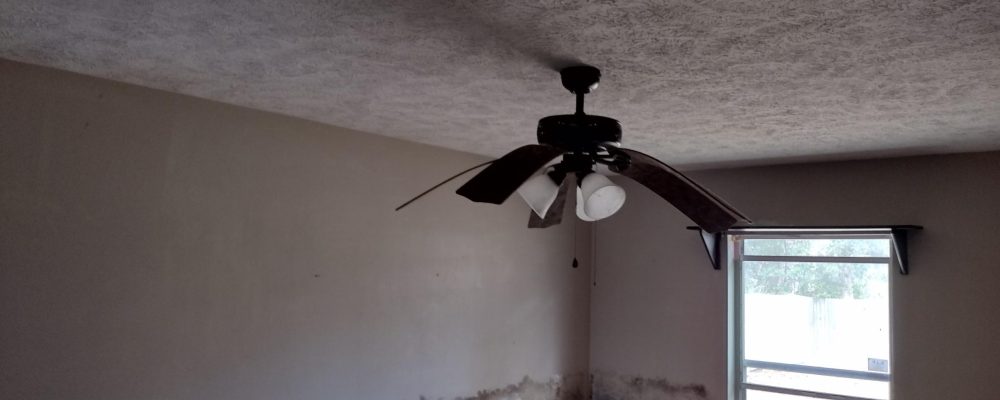
6. HVAC Systems: Circulating More Than Air
Your HVAC system is responsible for keeping your home comfortable, but if there’s moisture inside the system, it can also spread mold spores throughout the house.
Where to check:
- Inside air ducts
- Around vents or registers
- In drip pans or near condensate lines
- Around air filters or coil units
Tip: Regular HVAC maintenance is a must. Have your system inspected and serviced to ensure it’s draining properly and not harboring hidden mold.
7. Windows and Window Sills
Window condensation is a common issue, especially during the colder months, and mold loves to form in these places.
Where to check:
- On the interior window glass
- Around window sills and frames
- In the corners of window tracks
- Behind curtains or blinds that trap moisture
Tip: Wipe down condensation regularly, and use insulated or double-paned windows to help reduce moisture buildup.
8. Closets and Storage Areas
Mold in closets can be tricky because we don’t often open or check them. But clothes, shoes, boxes, and poor ventilation can create the perfect mold environment.
Where to check:
- On closet walls or ceilings
- On leather goods, shoes, or fabric
- Inside storage boxes or bins
- Behind furniture or shelving pushed against exterior walls
Tip: Keep closet doors slightly open to allow air circulation, and avoid overstuffing your storage spaces.
9. Carpets and Rugs
Once a carpet gets wet, it becomes a perfect host for mold, especially if it’s not dried quickly. The fibers trap moisture and dirt, which mold feeds on.
Where to check:
- Under area rugs in high-moisture areas
- Around the edges of carpeted rooms near exterior walls
- In basements or damp rooms with wall-to-wall carpeting
- Under furniture that prevents airflow
Tip: Always dry carpets thoroughly after spills or floods. In high-risk areas, consider using tile or waterproof flooring instead.
10. Behind Walls and Ceilings
This one is especially dangerous because mold behind walls or ceilings can grow unchecked for a long time before you notice it. By the time you see stains or smell mustiness, it could be widespread.
Where to check:
- Near pipes that may have slow leaks
- Around rooflines after storms or ice damming
- Near poorly sealed windows or doors
- Behind wall-mounted fixtures like sinks or toilets
Tip: Pay attention to subtle signs like bubbling paint, warping drywall, or unexplained odors. These could indicate hidden mold.
How Dry Me Out Can Help
At Dry Me Out, we’ve seen just how quickly a small moisture problem can turn into a serious mold issue. That’s why we take a comprehensive approach to mold inspections and remediation. Our trained professionals use state-of-the-art equipment to detect mold, even behind walls or in hard-to-reach places. We don’t just get rid of it, we identify the cause, fix the source, and help you take steps to prevent it from coming back.
Whether you’ve spotted mold or just want peace of mind, our team is here to help.
Need help dealing with mold or suspect it might be growing somewhere in your home? Don’t wait for it to get worse. Let’s get your home clean, safe, and mold-free—together. Contact Dry Me Out today for top quality mold services and professional restoration you can count on.

